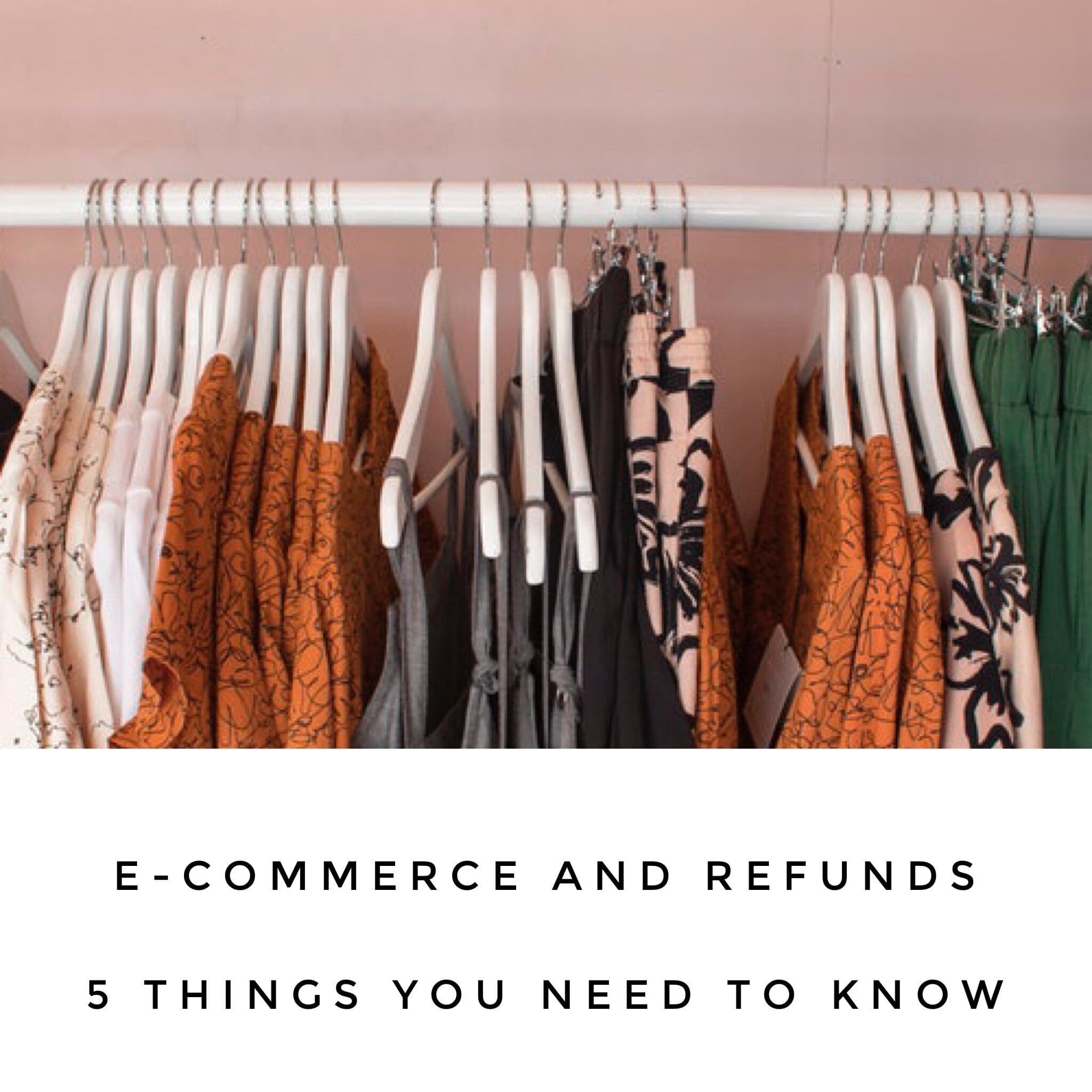If you run an e-commerce store, building trust with your target audience is key. Without the ability to walk in and touch your product, it’s particularly important to have a clear and fair refund and return policy. Not only is it important to know your legal obligations when selling products but a clear returns policy is the fastest way to create confidence with your buyer. Whilst smaller businesses may not be able to offer deals like “free 100 day returns” or “free shipping on all orders”, allowing the customer to see a clear process for dealing with their fears around buying the wrong size or not liking their item can be managed and in most cases eliminated with a great customer returns policy.
Set out below are 5 ways to ensure that your E-Commerce store’s Returns and Refund Policy not only complies with your responsibilities under the Australian Consumer Law but will help convert online shoppers into paying customers.
1. What are the Consumer Guarantees?
If a business sells products that are less than $40,000 or over $40,000 but used for household or personal use, the products come with automatic guarantees under the Australian Consumer Law. The key Consumer Guarantees that apply to e-commerce retailers include:
- products must be of acceptable quality.
- products must match the description.
- products must be fit for their intended purpose.
E-commerce retailers need to ensure that their product descriptions and imagery are clear and accurate to comply with the Consumer Guarantees.
2. Repair, Replace or Refund
If a product fails to comply with any of the above Consumer Guarantees, then a customer is entitled to repair of the product, a replacement or a refund of the purchase price. You as the business owner are able to decide which remedy will be used.
- Repair: If there is a minor problem with a product, you can offer a free repair. This may involve the product being returned to you and being repaired or arranging for a repair provider for the customer to send the product.
- Replace: if you agree to replace the product, the customer must be provided with exactly the same item.
- Refund: the full purchase price can be refunded.
However, it’s important to remember that if a product has a major problem, then the consumer has the ability to request either a replacement or refund. A major problem is
- a problem that would have stopped someone from buying it if they’d known about it
- significantly different from the sample or description
- substantially unfit for its common purpose and can’t easily be fixed within a reasonable time
- doesn’t do what you asked for and can’t easily be fixed within a reasonable time; or
- unsafe.
3. Sale Items and Change of Mind
The Consumer Guarantees will apply regardless of whether you are selling items at full retail price or at a discount. However, if a sale item clearly describes any faults with the product as the reason for the discounted price, then the customer is not able to rely on the Consumer Guarantees in relation to that fault.
What about ‘change of mind’ policies? There is nothing in the consumer guarantees which prevents a business from having a ‘no change of mind policy’ on full price or sale items. However, a business must ensure that the refund policy is clear that the change of mind policy doesn’t override the Consumer Guarantees and the customers right to “repair, replace or refund” will apply if the product doesn’t meet the Consumer Guarantees.
4. Who pays for the cost of shipping the returned item?
You can specify in your refund policy that the customer is responsible for the cost of return shipping if the customer believes their item is faulty. If the product is deemed to be faulty once it has been returned to you, you will need to refund the shipping cost to the customer. If you are selling large items such as furniture, TV’s etc, the business is required to make arrangement for shipping the items back to you for inspection.
5. Time Limits on Consumer Guarantees
There are no specific time limits on when a customer must notify you of a fault or defect with a product, however, a customer should notify you as soon as they become aware of any fault. The Consumer Guarantees will apply based on the amount of time that may be considered reasonable, given the cost and quality of the item.
What should I do now?
Now that you have an idea of what Consumer Guarantees will apply to your products and what is required when a product doesn’t meet the consumer guarantees, it’s a good idea to review your returns and refund policy to make sure that you meet the Australian Consumer Law standards. It’s a good idea for your returns and refund policy to include:
- whether you will accept returns for change of mind (although, being mindful to be clear that this doesn’t take away from the customer’s right to a refund for faulty items);
- if the product is faulty, the customer is entitled to recover reasonable postage costs; and
- whether you will replace or refund items that are deemed to be faulty.
If you’re ready to invest in a Returns and Refund Policy that addresses the requirements of the Australian Consumer Law, we’ve created an “E-Commerce Document Bundle” which provides you with a Returns and Refund Policy, Website Terms of Use, Website Privacy Policy and a 30 minute consultation to get you started using your new legal documents. If you’d like to find out more or have any questions about your e-commerce stores policies, get in touch with Emilia Cardillo, Principal Lawyer at emilia@cardillolaw.com.au.
You can also check out our Free Smart Business Toolkit which is a handy checklist to identify key areas in your business and how to reduce your risk. Get instant access here.
Disclaimer: the information contained in this post is not intended to be legal advice and you should consider obtaining your own legal advice before implementing any information in this post.

